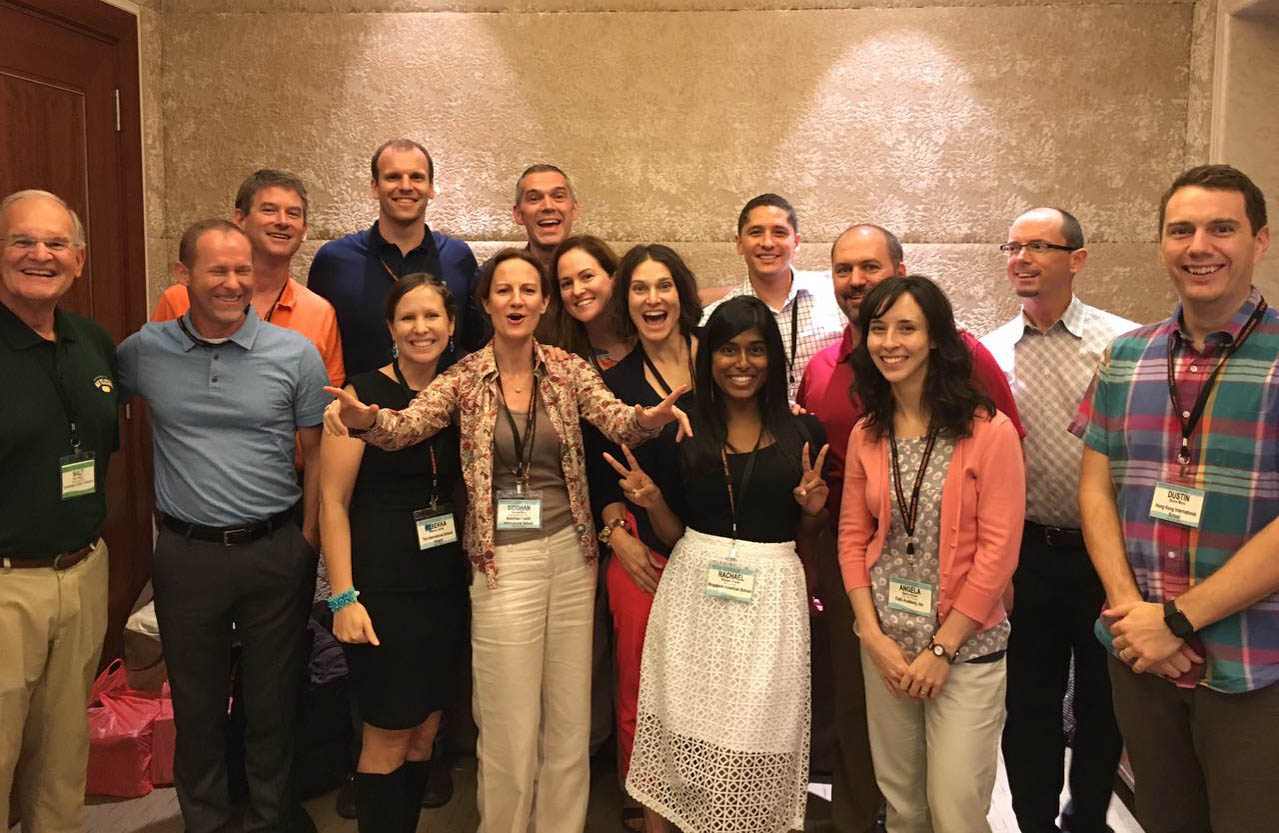Whether it is a 45-minute period or a 75-minute block, I challenge you to identify teachers who take advantage of the entire period. As part of this challenge, school leaders, I suggest you take a walk around your school’s hallways tomorrow and see how many teachers are making connections with their students even before their class starts.
At Tsinghua Univ. High School International (THSI) in Beijing, one of our Secondary School’s year-long goals focuses on building and establishing positive classroom learning environments. We are a young school that is still going through some growing pains, however, we are making great strides on establishing this positive classroom environment from the start of every class. If you take a walk down our hallways before the start of each period, you will see our teachers standing by the doors of their classrooms, interacting with each student as they walk in. We have recently integrated the Positive Greetings at the Door (PGD) classroom management strategy outlined by an article by Cook et al. (2018) titled “Positive Greetings at the Door: Evaluation of a Low-Cost, High-Yield Proactive Classroom Management Strategy”.
The PGD approach will minimize the externalizing behaviors that cause classroom interruptions and limit student focus and attention. Many teachers that I have seen over time handle student misbehavior using a reactive behavior management approach which, as the article states, affects student-teacher relationships and loses instructional time. Reactive management of behavior usually comes immediately after a student misbehaves during class, interrupting the flow of learning. Teachers using the PGD strategy, on the other hand, use proactive classroom management that can reduce misbehavior over the long run while maximizing instructional time. The magic lies in the few seconds that teachers have at the door to positively connect with each student as they walk into class. What teachers say verbally or non-verbally (a simple nod or smile) to each student has monumental effects on how the student will approach the class, resulting in less time off task and decreased misbehavior. To break this strategy down further, I want to highlight 4 specific ways our school has been using the PGD strategy, as referenced in the article:
- Teachers use these few seconds to privately encourage students who misbehaved last class. “Johnny, do you remember I had to remind you to stay on task last class? Let’s see if we can stay more focused today.” “Erica, I noticed you were a bit chatty with Rachel last class. I would appreciate it if you could talk to her instead at lunch next period. Are you able to do this?”
- These precious seconds are also being used to deliver pre-corrective statements and reminders on expected behaviors. “Javier, remember to start on the warm-up problems as soon as you take your seat.” “Sam, did you bring your laptop? We’re going to need it in class today.”
- The PGD approach also is used to deliver praise to reinforce positive behaviors. “Leo, I loved how many times you raised your hand to volunteer answers last class. I’d love to see more of that today.” “Jenny, I noticed you on task during yesterday’s group discussion. I hope you saw how valuable your contributions were to your group.”
- Students are feeling a stronger sense of belonging in our classrooms. Teachers at the door immediately are able to make and reinforce position connections with each individual student.
We are noticing reduced student misbehavior and more meaningful student-teacher connections. Student learning is maximized when they feel valued, respected, and cared for by their teachers. I invite you to reflect on how something similar could look like at your school.
Referenced article:
Cook, C. R., Daikos, C., Fiat, A., Holland, E.A., Larson, M., Renshaw, T., Slemrod, T., & Thayer, A.J. (2018). Positive greetings at the door: evaluation of a low-cost, high-yield proactive classroom management strategy. Journal of Positive Behavior Interventions, 20(3), 149-159.

